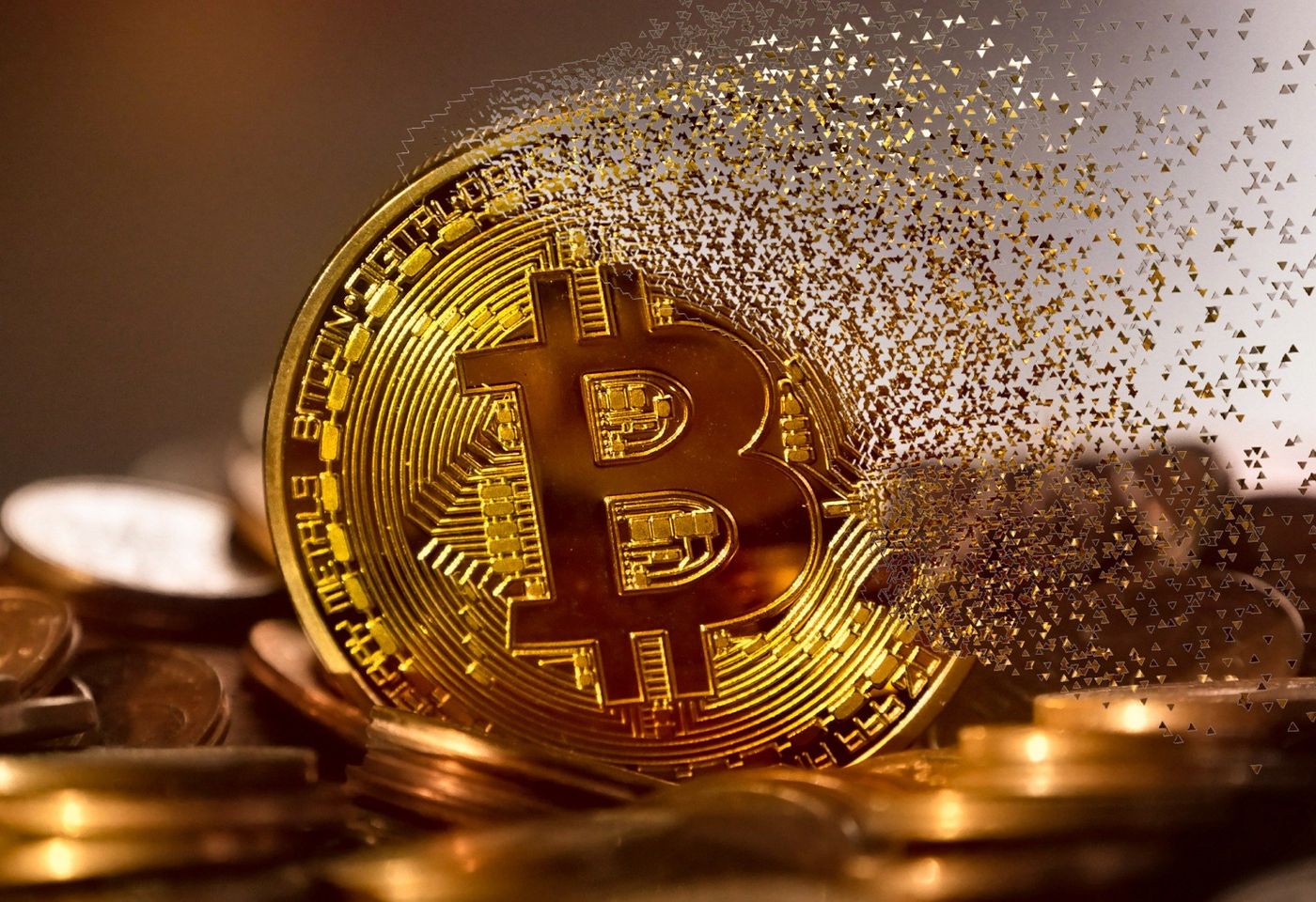Weekend chat: virtual currency, two or three things in the blockchain world: 2022 (twenty-five)
currency market

The money market gives businesses a way to make short-term loans with maturities of less than a year. This market for short-term financial asset transactions can help companies and governments to easily convert capital into cash to meet operational capital needs; it can also allow temporarily idle cash reserves in banks to flow [1].
In the legal currency financial system, we know that bonds, short-term loans of banks, negotiable time deposit certificates, commercial papers, etc. are all forms of payment in the money market [2].
Typically, the receiver pledges certain assets to the money market for cash. If the borrower is unable to repay, the collateralized assets are sold to balance the loss of funds lent and not returned. This money market system belongs to the structure of centralized finance. Like everything in this world, this centralized financial system has market advantages such as a large amount of liquid capital, low risk, etc., but also has the disadvantage of a single entity having evasive rights and influence. These entities can change the terms and conditions of other stakeholders in any way. To make matters worse, they can even draw money from custody proceeds[3].
In theory, there is no single entity with too much power in the decentralized currency market. All running dogs are controlled by smart contracts. Once up and running, no single individual can interfere with the operation of the smart contract. What human beings need to do is mortgage, borrow, and repay these things that need to be done in the recent currency market.
On the blockchain, we can see decentralized applications like AAVE, where users can deposit their own funds for others to borrow, or mortgage their own funds and borrow other virtual currencies to improve their liquidity. Not everyone wants to trade their bitcoins, so they use other virtual currencies as collateral for trading.
All these operations are done in the network and on the blockchain, and users do not need to provide their name or reputation to use the "real estate" in their hands to obtain "cash" that can be traded immediately.
When it comes to reputation, a product that can be "collateralized", it is also another drawback in the world of fiat currency. That is, if you say the world's currency, and someone else has your fiat currency in more or less hands, then in fact you can be that single entity with too much power, even if you may also be a lender. For America, which can print dollars, credit doesn't matter, as long as it can print. Devaluation is not only on its own side.
It is worth noting that the currency market of virtual currency is not all decentralized credit exchanges; and the decentralized currency market is not only about trading virtual currency.
Take Celsius Network, BlockFi, and Voyager on the cusp of the recent storm, all of which are centralized models. The transactions of users in their accounts are just pieces of data in these companies' databases; that's why they can freeze users' deposits.
The blockchain is actually a public database, and the information on it is immutable data. If physical assets, such as houses, cars, etc., are used as collateral, as long as all loan details are indicated on the blockchain, the decentralized currency market can be used for physical collateral.
The problem with decentralized finance

As mentioned above, decentralized finance can actually be used in the traditional financial system. So why are there so many obstacles in today's society?
We can't blame all of our problems on the moribund struggles of traditional financial gainers who don't want to lose their vested interests. Everything in the world has advantages and disadvantages; the biggest problem of decentralized finance and even the entire decentralized structure is management.
Decentralized finance means decentralization of power to smart contracts. Central control and laws and regulations are actually in conflict with the core principles of decentralized finance [4].
However, smart contracts and even all programs are written by humans, and errors may occur when they are written by humans. There has been a steady stream of hacks, the most recent being the hack of the Solana wallet in the past week and the theft of $6 million worth of virtual currency. The blockchain itself, centralized trading centers, and hot wallets may all be hacked [5].
Programs will have bugs. If humans can write programs seamlessly, and can even predict new loopholes that may be caused by the development of technology in the future; then we are also far away from the fight between humans and machines as described in the movie "Terminator".
Not just loopholes, what if only smart contracts were used to control unscrupulous teams to drive up prices and then pull the carpet?
Not everyone can embrace new technology the first time. Looking at the fraudulent methods of mobile phone applications or emerging media, or even updated at any time, it can be seen that it is difficult for people all over the world to quickly grasp the concept of blockchain, virtual currency and decentralization.
What's more, in an era when fiat currency was the only legal currency and virtual currency was considered a security, most people still needed to exchange their virtual currency for fiat currency to fill their stomachs. In other words, centralized exchanges are still essential. We cannot prevent an exchange from infringing on the rights of users without reasonable rules and regulations.
Take Voyager's bankruptcy: yes, their funds were in the bank, which froze their assets as a result of the bankruptcy. It looks like it's a matter of the judiciary.
But if they didn't freeze the withdrawal function first, users could start early when they see problems with the company's operations. Of course, having all users stop at the same time can also cause operational problems for the company; probably the best decision was made at the time. However, from the point of view of a thing that declares bankruptcy, it is still selective in mergers and acquisitions, and in terms of striving for its own best interests, the interests of its own users are definitely not the first choice in their hearts [6].
Elsewhere it's not very clear, as far as the US is concerned, only assets issued by banking entities are protected by the FDIC; assets of virtual currency companies. That is to say, for an ordinary person, the safety factor of assets in decentralized finance is really not high. This is also one of the reasons why virtual currency cannot become the backbone of transactions for the time being [7].
In order to find a way of survival that can balance decentralized finance among the appropriate laws and regulations and the autonomy of decentralization, I am afraid that it will take some wise efforts.
Wormhole 3

You may ask, why does the word wormhole appear in an article on the topic of blockchain? Could it be that virtual currency can be transmitted to another world in the universe at high speed through wormholes? How much does it cost to transfer coins? Also made a picture from space.
First of all, virtual currency is originally virtual, and wormholes are also a feeling. There is not really a hole in the universe, allowing creatures to buy tickets to enter the door and go out. Virtual and illusory things can only be represented by such a picture...
So what this text is trying to describe is a magic tunnel linking Web 2.0 and Web 3.0. Today was actually my first real visit to this platform. I saw the term wormhole in the research and development plan of Nutbox earlier, but I never knew what it was.
Created my account today in the link to the test posted on Discord. Since it is still in the test, the address will not be sent.
This platform can bind Twitter and build an Ethereum wallet at the same time. There are some STEEM tokens in it. There is no need for any money after binding, as long as you log in to Twitter, you can browse directly on the platform.
According to the introduction, it is possible to use Twitter to issue/gift virtual currency (currently only the function of STEEM has been seen). It is guessed that different kinds of virtual currency of Web 3.0 can be issued by using the technology of Web 2.0.
When tweeting, I found that the Resource Credit on the Wormhole 3 platform has declined. It seems that it is the same as posting on STEEM/HIVE. First, control users not to put water on Twitter; second, put it on the blockchain at the same time as tweeting. It is estimated that the rewards of virtual currency can be obtained according to different labels. It's a bit like Project Blank, a blockchain microblog that LeoFinance wants to develop.
It is said that this platform will be linked to Nut Box and Peanut Coins in the future. Do you think this is to allow virtual currency users to trade directly on Twitter? It looks kind of fun. Looking forward to the development of this new thing.
Cited Articles
- https://www.wallstreetmojo.com/money-market/
- https://www.investopedia.com/terms/m/moneymarket.asp
- https://cointelegraph.com/news/what-is-a-decentralized-money-market-and-how-does-it-work
- https://cointelegraph.com/news/decentralized-finance-faces-multiple-barriers-to-mainstream-adoption
- https://investorplace.com/2022/08/solana-hack-affecting-thousands-of-users-traced-back-to-slope-wallet/
- https://cointelegraph.com/news/voyager-received-better-buy-out-offers-than-ftx-s-set-to-return-270m-to-customers
- https://cointelegraph.com/news/deposits-at-non-bank-entities-including-crypto-firms-are-not-insured-fdic
Like my work? Don't forget to support and clap, let me know that you are with me on the road of creation. Keep this enthusiasm together!
